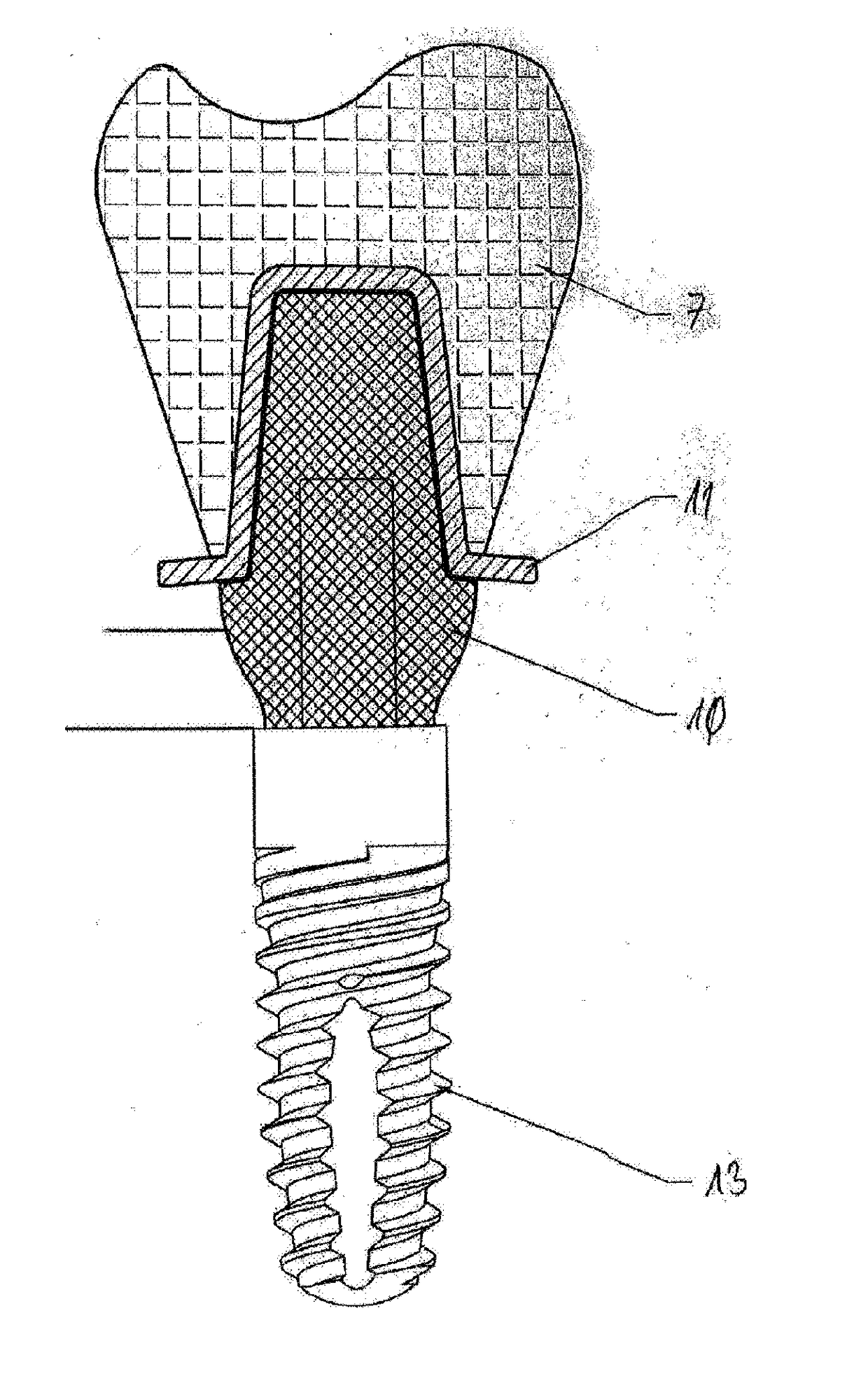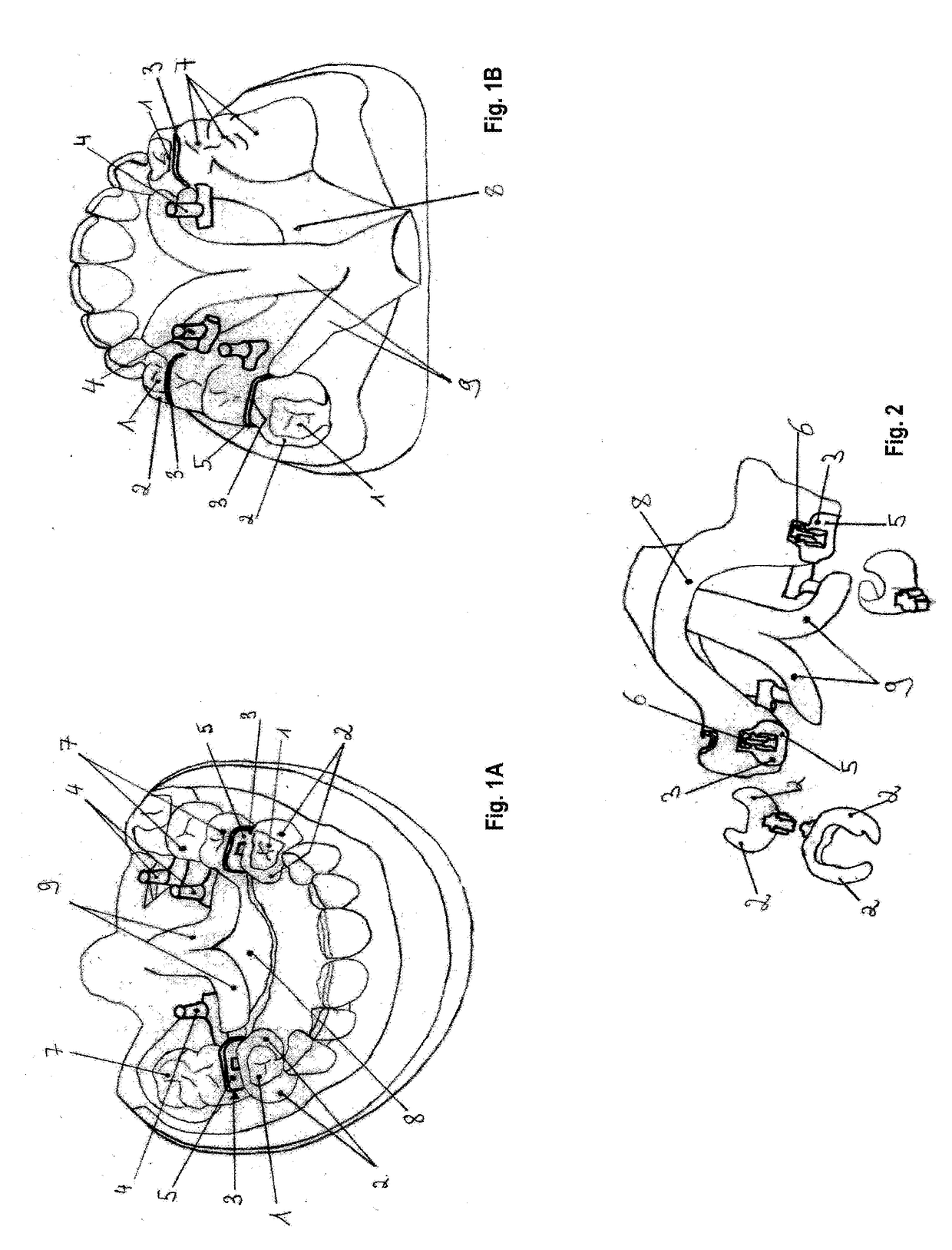Method of making a dental prosthesis
a dental prosthesis and dental technology, applied in dental prosthesis, dentistry, medical science, etc., can solve the problems of time-consuming and costly, falling out of consideration for individual patients, etc., and achieve the effect of reducing the time expenditure of patients
- Summary
- Abstract
- Description
- Claims
- Application Information
AI Technical Summary
Benefits of technology
Problems solved by technology
Method used
Image
Examples
Embodiment Construction
[0027]The dental prosthesis shown in the drawing is intended for inclusion in and attachment to existing residual dentition and / or at least one implant. Here, the individual teeth or implants form anchor elements for the dental prosthesis, as can be seen from FIGS. 1A and 1B.
[0028]For the preparation of this dental prosthesis, an imprint of the actual condition of the patient's jaw is first undertaken, and from this a master model and a working model are molded that then have the form shown by way of example in FIGS. 1A and 1B. In a manner not shown in detail in the drawing, the working model is adjustably fixed in a milling base and aligned with respect to the insertion direction in a milling machine or parallelometer.
[0029]Then, adhesion surfaces 2 made from wax in the manner of wide-area brackets are molded onto the anchor elements 1, i.e. the formed anchoring elements for the dental prosthesis in the mouth of the patient (teeth, implants or the residue thereof). Depending on the...
PUM
 Login to View More
Login to View More Abstract
Description
Claims
Application Information
 Login to View More
Login to View More - R&D
- Intellectual Property
- Life Sciences
- Materials
- Tech Scout
- Unparalleled Data Quality
- Higher Quality Content
- 60% Fewer Hallucinations
Browse by: Latest US Patents, China's latest patents, Technical Efficacy Thesaurus, Application Domain, Technology Topic, Popular Technical Reports.
© 2025 PatSnap. All rights reserved.Legal|Privacy policy|Modern Slavery Act Transparency Statement|Sitemap|About US| Contact US: help@patsnap.com



